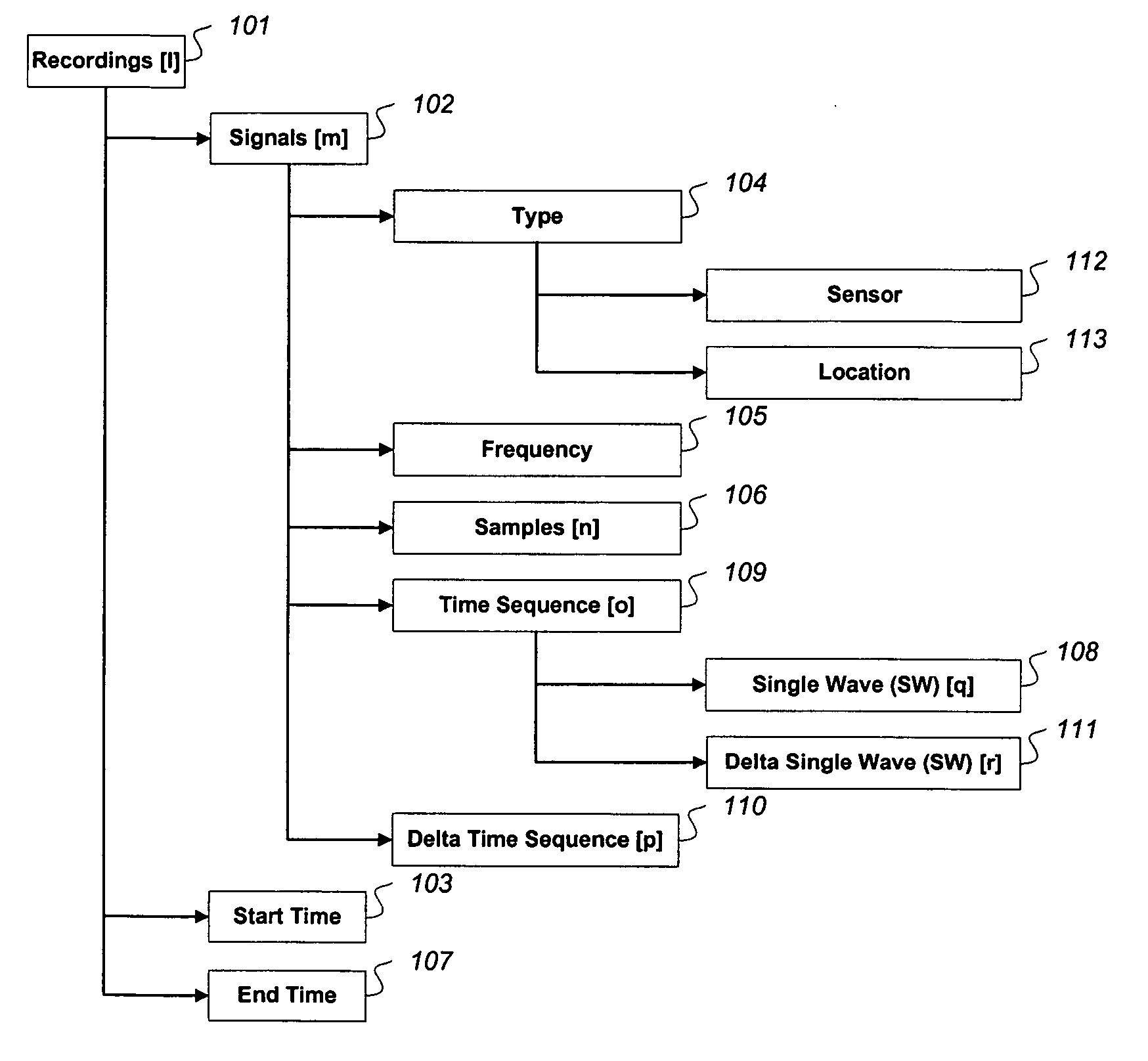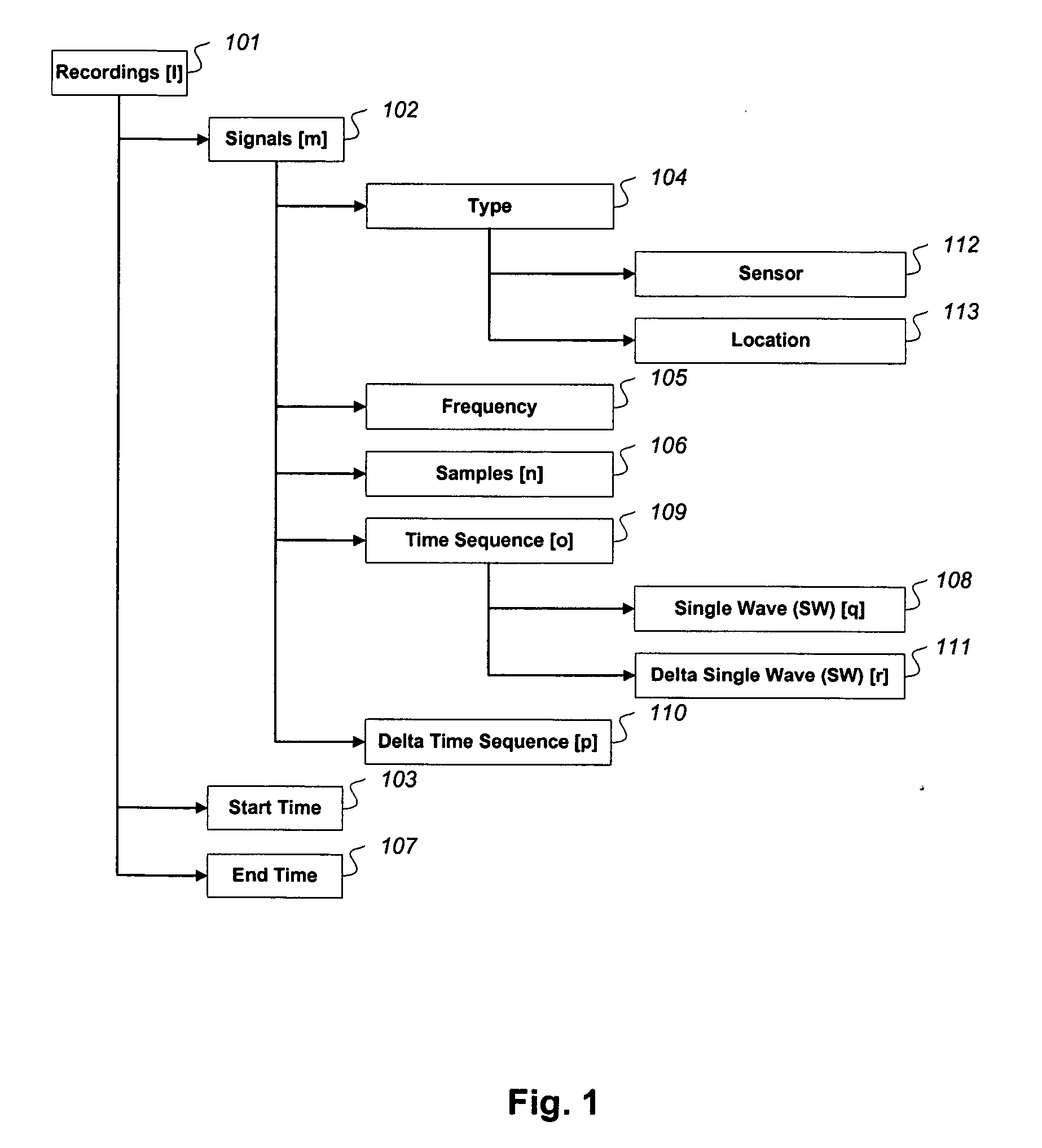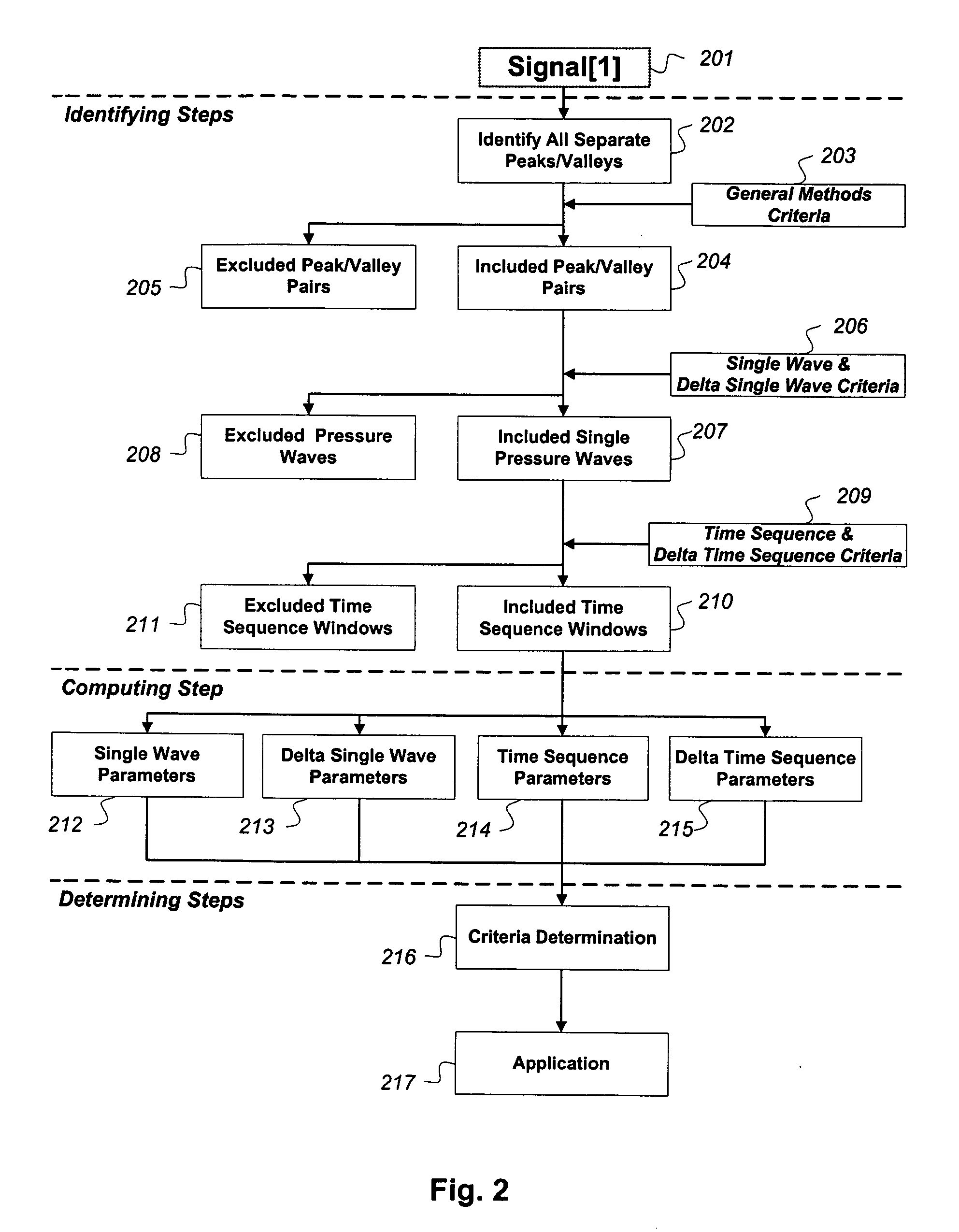Processing of continuous pressure-related signals derivable from a human or animal body or body cavity: methods, devices and systems
a technology of which is applied in the field of processing of continuous pressure-related signals derivable from human or animal body or body cavity, can solve the problems of no or minimal opportunities for quality control, and the challenge is even greater, and achieves the effect of enabling optimum monitoring results and less invasiveness
- Summary
- Abstract
- Description
- Claims
- Application Information
AI Technical Summary
Benefits of technology
Problems solved by technology
Method used
Image
Examples
Embodiment Construction
[0180] In FIG. 1 is shown an overview of notation and relationships related to continuous pressure signals, as used according to this invention. A recording 101 is one or more simultaneous signals 102 derivable from locations inside or outside a human or animal body or body cavity, each of said signals 102 having identical time reference, though it is not a requirement that start time 103 is identical for all signals of a recording. Each signal has the following attributes: type 104, frequency 105, and actual samples 106. Given these values, end time 107 can be calculated. According to this invention a specific sampling frequency 105, is not given. For single pressure wave analysis, it has been found that sampling frequencies of 100 to 200 Hz are useful. The notation List[x] is a reference to an element within an ordered list. With reference to FIG. 1, some examples are given:
[0181] The notation Recording [l].Signal [m].Time Sequence [o].Single Wave [q]) denotes a specific Single W...
PUM
 Login to View More
Login to View More Abstract
Description
Claims
Application Information
 Login to View More
Login to View More - R&D
- Intellectual Property
- Life Sciences
- Materials
- Tech Scout
- Unparalleled Data Quality
- Higher Quality Content
- 60% Fewer Hallucinations
Browse by: Latest US Patents, China's latest patents, Technical Efficacy Thesaurus, Application Domain, Technology Topic, Popular Technical Reports.
© 2025 PatSnap. All rights reserved.Legal|Privacy policy|Modern Slavery Act Transparency Statement|Sitemap|About US| Contact US: help@patsnap.com



